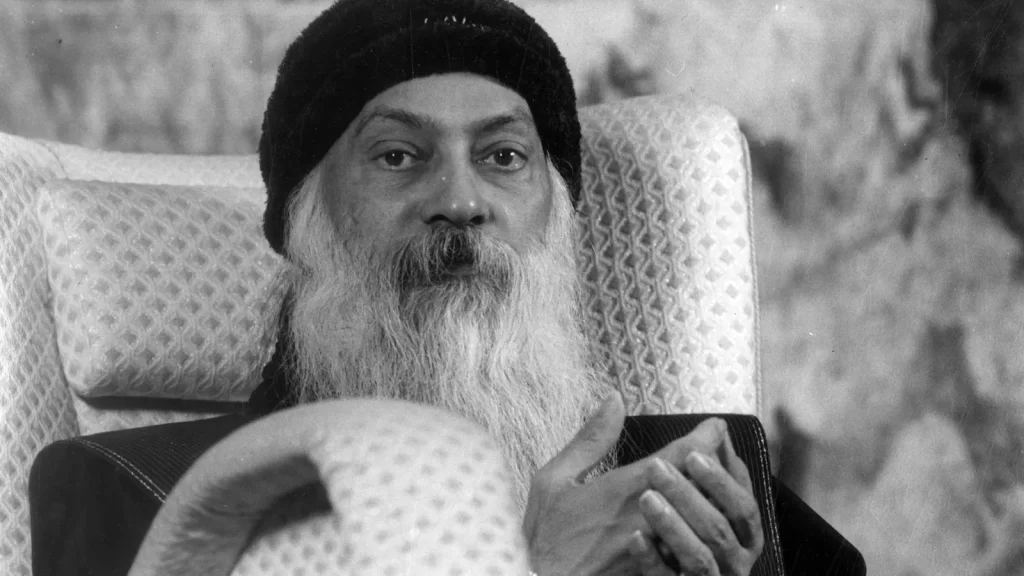A spiritual leader who was a controversial and global name Rajnish Osho is still the main topic across both philosophical and artistic circles while they either loved him or hated it, there is no middle. Though he is most commonly associated with meditation, sexuality and radical spiritual ideologies, his influence on art—the language and modality of art here—is unmistakable. Osho was an inspiring paradigm shifter, discussing creative inspirations the individual morals and standing out of the average standard. The essay as a brief overview on how Osho revolutionised the language of art by invoking what personal expression, breaking away from tradition, synthesis with Eastern and Western thought, and integration with meditative arts.
Rebellion Against the Status Quo and Champions of Independence
Perhaps even more importantly, Osho dramatically affected the language of art with his outright contradiction of any traditional structures or frameworks. Osho told artists — surreally, because he practiced this belief, that “each one of you should throw the paintings on whomsoever passes by” — to defy their craft tropes and benchmarks, according to his bio – only when released from expectations can a true creative spirit emerge. In his view, art that was made in the mind (through ego, intellect, or societal constraints) was bound to be very restricted. Real creativity comes when the artist is working from a space that is pure consciousness i. e without knowing what art work should be according to Osho.
This break from tradition reflected wider artistic movements of the 20th century, informed by modernism and postmodernism in which artists also worked to challenge established norms, fluidity of form or style and making of content. But whereas these movements often seek to criticize or [se] and deconstruct normative values, Osho sees the most value in personal liberation, freedom from self imposed constraints. He saw art not as merely a medium for social commentary and action, but as inquiry into the self.
According to Osho, art becomes an expression of self that is free from intermediary cultural or aesthetic dogmas. He championed concepts of self-expression, becoming the poster boy for spontaneity in art making and broke away from social norms prevalent at the time inspiring people to live and think uninhibited. This novel, idiosyncratic ethos also dovetailed nicely with the artists who were hungry to be liberated from traditional or institutional constraints and thus spent much of its time breeding new kinds of avant-garde and experimental art.
Uniting Eastern and Western philosophies
Osho also established a deep relationship between Eastern expression and Western existentialist prophecy. His unique formula of Eastern mysticism (from the Indian spiritual heritage of meditation, Tantra and Vedanta) with Western philosophical concepts such as individualism, freedom and existential meaning. For many artists, especially in the West looking for a fresh spiritual or existential dimension to their work itself this fusion felt indispensable. The global pilgrims who followed Osho in large numbers and including a fair slice of the creative element provided a fertile ground for old eastern ideas to intermingle with what was simmering on the surface of western cultures. Musician and poets infuse their work with Osho meditations, mindfulness, higher consciousness.
Osho´s teachings, in this way, can be understood as part of the reduction of traditional divisions — national borders or cultural and ideological borders– that got more porous globally in the end of the 20th century. Because of his provocative reworking of the East-West divide, Osho gave artists a key to producing art that was not beholden to any particular cultural heritage or aesthetic tendency. It is this amalgamation of genres, which helped to expand the discourse on art globally enabling cross- cultural artistic dialogues.
Creative Resonance: A Secular, Nature-based Model for Art as Meditation
One of Osho’s most revolutionary contributions to the language of art was that creativity and meditation are never separate. Meditation, for Osho, was not only a way to create inner calmness or spiritual rebirth — it was a path to true creativity of the heart. He believed art made with the mind focused—even just a little—could elevate artwork beyond the usual intrusion of ego and intellect. This concept reshaped art as not just an emanation of human dexterity or creativity, but rather a deep Spiritual immersion.
I guess the idea of art as meditation — another Osho term — appealed to an increasing number of artists who had grown tired of purely formal or conceptual innovations. His ideas created a transition from art as an intellectual process to that of a secondary experience where the person transcends into self. This turned the inner state of the artist into one kind of object on a par with the external form or content of their work. Process over product was the new order of the day. This approach to art, that recognizes the benefit of being present and flowing with a purpose while engaging in creative work, paved the way for what I refer to as “meditative art“—a process based artistic experience where creating is done with inherent therapeutic intent.
Although this perception of creating as meditation would eventually seep through to art movements like abstract expressionism, minimalism, and performance where the act of an artist or conditions at that moment are just as vital or meaningful than the actual product itself. Mark Rothko, Marina Abramovic and other artists have similarly explored these themes of presence, energy and the meditative aspects of artistic creation.
Fighting the man through art
A last aspect of thema was his shock value, throwing all societal norms and taboos to hell. The openness in sexuality, morality and authority of Osho’s discourses was highly controversial with both the traditional teachings in Eastern orthodoxies as well as Western values. His advocacies of free love, individual sovereignty, and denunciation of traditional morality opened up a patently new ideological sphere for the artistic exploration of subject matters otherwise unacceptable.
Artists were more likely to gravitate toward Osho and his radical antiestablishment message as artists were already assembling the components of flavor around sexuality, gender, and power relations. His ideology opened up a wider window for artists to address the various subjects which would otherwise be termed disallowed. Osho also opened the way for more artistic expression to be liberated by fighting against restrictions, moral taboos that do damage, and long-held but damaging norms as well, liberating artists from such roles regarding Issues like eroticism, body politics, and transfiguring identity.
This version of content liberation is performed in the development of feminist art, queer art, and also other socially stirred fine art that managed to surface during the second part of 20 th century. Osho to the core defines the radical aspect of aesthetic language that many artists adopted since then in search of a justification for rope walk upon which they placed their art.
Conclusion
Overall Rajnish Osho has influenced the language of art very distinctively. Osho had an incredible influence on both how art was interpreted and created with his repudiation of canonical forms, encouragement of personal involvement, amalgamation of Eastern and Western beliefs, and assertion that art itself is meditation. He infused a sense of liberation, intuition and spirituality in art that defied cultural and ideational norms. Although his lessons are still debated, the advancement of an artistic language has expanded deeper and artists claim greater freedoms to investigate their inner realms as well as question societal expectations. In art, Osho cannot be confined to a set of techniques or movements, but his true legacy is just how much people were able to become not just more creative and expressive selves but also more deeply themselves due to discovering new ways to use their minds.
Feature Image Courtesy: Indian Express
Reference
Galanter, Marc. Spirituality and the Creative Process: Insights from Osho’s Teachings. Spirituality and Creativity Studies, 2018.
Joshi, Vasant. Osho: The Luminous Rebel. Full Circle, 2007.
Laxmi, Ma Anand. The Journey of the Heart: The Biography of Osho. Rebel Publishing House, 2002.
Osho, Rajneesh. Creativity: Unleashing the Forces Within. St. Martin’s Griffin, 1999.
Palmer, Susan J. Osho’s Children: The Neo-Sannyasin Movement. Princeton University Press, 1993.
Powers, John. Eastern Mysticism and Western Art: The Influence of Osho. University of California Press, 1982.
Robbins, Tom. Osho: The Rebellious Spirit. Osho Media International, 2009.
Tumber, Catherine. Creative Destruction: Osho and Postmodern Art. Journal of Contemporary Spiritual Movements, 2005.
Vanita, Ruth. Art and Spirituality in the Osho Commune. Journal of Global Buddhism, Vol. 2, 2000.

Iftikar Ahmed is a New Delhi-based art writer & researcher.





